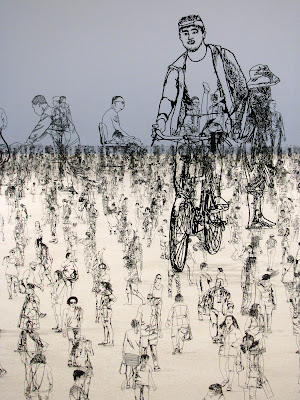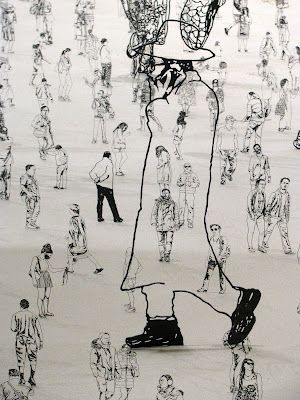My customer saw the album I made for Nili's Bat Mitzvah and asked me to make one for her own son's Bar Mitzvah party. She told me that her son, Yishai, loves swimming, dinosaurs, dragons, LEGO and watching movies. She also sent a copy of his Bar Mitzvah invitation, so that I could see the colour scheme they were using, along with photos from Yishai's Hanachat Tefillin ceremony at the Kotel, or Western Wall. This is the ceremony when the almost 13-year-old boy lays tefillin (phylacteries) for the first time in advance of his Bar Mitzvah.
My customer asked me to base the cover design of Yishai's album on the photos taken at the Kotel. I have shown Yishai with the stones of HaKotel HaMa'aravi, or Western Wall, in the background. The Western Wall, or "Wailing Wall", is the most religious site in the world for the Jewish people. Located in the Old City of Jerusalem, this ancient limestone wall is the western support wall of the Temple Mount. King Herod built this wall in 20 BCE during an expansion of the Second Temple. When the Romans destroyed the temple in 70 CE, the support wall survived.
In normal times, when there isn't a pandemic going on, thousands of people journey to the wall to visit and recite prayers there. These prayers are either spoken or written down and placed in the cracks of the wall. The wall is split into two sections, one area for males and the other for females.
Yishai is wearing his new blue and white tallit and tefillin. The tallit is a garment Jewish men wear during prayer. Some boys begin wearing the tallit from the age of Bar Mitzvah, while others wait till after their wedding. Tallit is an Aramaic word from the root tll / טלל meaning 'to cover over'. By wrapping yourself in the tallit, or by covering your head with it, it is believed that the intention and direction of your prayers can be enhanced. The tallit often has black or blue stripes. This is thought to be because that was the fashion in Greece and Rome in the Biblical period. It does not in fact have to be striped and can be plain white.
The tefillin (sometimes called phylacteries) are cubic black leather boxes with leather straps that Jewish men wear on their head and their arm during weekday morning prayer. Jewish men start wearing tefillin just before their Bar Mitzvah. I also decorated five pages inside Yishai's album. Mum told me that he is fascinated with dragons but that they shouldn't be too cute! I created a rather scary looking green one with a shiny gold tail in the colours of Yishai's Bar Mitzvah invitation. Next I cut out a tiny tub of popcorn and a paper cup of Coke, since eating popcorn and drinking Coke is the standard activity while watching movies! I added a couple of little movie tickets too. On the next page I showed Yishai swimming and followed that with a dark green dinosaur, another of his favourite things. Finally, I cut out some tiny LEGO pieces in various shades of green and gold. The front of the album simply says Yishai's Barmitzvah and the month of his celebration. As is the case with many of the albums I have created recently, Yishai's mum decided to leave the date off the cover just in case the party had to be postponed because of Covid-19. As far as I know, all went well and nothing was delayed!
* This post has been shared on Little Things Thursday, Creatively Crafty and Wordless Wednesday (on Tuesday).



























































































